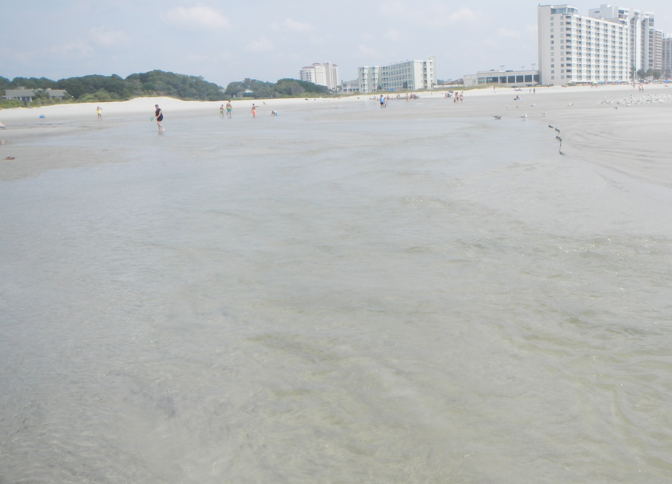A sandy beach is actually sometimes a pretty good place to think about fluvial forms and processes. The small streams, swashes, outfalls, and ebb-tide channels can be examined up-close, and they change several times each day, with the tidal cycle (here where I am at the moment in South Carolina, two high and two low tides each day). Thus Buck Swamp Creek, which discharges on the beach near where I’m staying, goes through four cycles of change a day.
A lot of work in recent years suggests that unless the material is pretty cohesive (which of course beach sand is not), without vegetation stream channels tend to be braided, and single-channel meandering forms are rare. You can see that here, where the marsh creeks—with plants and mud—are meandering, but develop nice braided patterns where they cross the sand. But along a mud coast near Cairns, Australia, where I spent some time last (N. hemisphere) summer, the same kinds of channels across the tide flats were meandering.

Braided channel crossing the beach at low tide, Myrtle Beach, SC.
The changes observable over very short time periods are also quite instructive. These beach-streams are never the same at the same point in the tidal cycle two days in a row. Even where the weather is the same (as it unmercifully often is in coastal S.C. in August) and the waves coming in are the same, the channels change every cycle. This, to me, shows on a greatly accelerated time scale the importance of path dependence and contingency in fluvial systems. Minor changes in the shifting sands produce different outcomes. Traditional Earth science theory suggests that the same processes acting under the same boundary conditions produce the same results. That’s not how it works on the beach-streams of Horry County, South Carolina, or the planet in general.
That makes scientific prediction more difficult, but it also makes geomorphology more fun!
